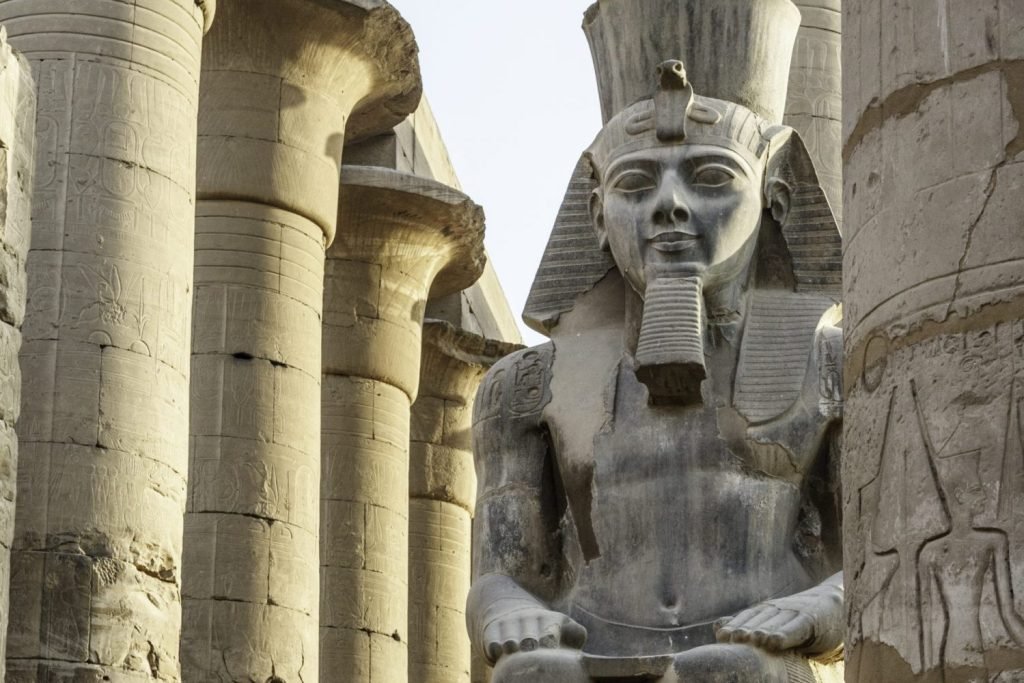
History
Ancient history and settlement.
The ancient capital of Thebes centered around the Temple of Amon, dedicated to the ancient Egyptian’s primary god. The temple was commissioned by King Amenhotep III in 1392 BC, completed by Tutankhamun (1336-27 BC), and then expanded by Rameses II (1279-13 BC). It is known today as the Temple of Luxor. An avenue of sphinxes connects it to Karnak.
The original Temple of Luxor is said to have consisted of a large court and a complex of halls and chambers. In one hall is a granite statue of Alexander the Great. At the entrance stands two colossal statues of the pharaoh Ramses, and a pair of obelisks. One of the obelisks still stands there today, the other was removed and re-erected in 1831 in the Place de la Concorde, Paris where it still stands today. When Thebes fell into decline, Luxor remained the most populated part of the town.

Geography
Luxor has a hot desert climate (Köppen climate classification BWh) like the rest of Egypt. Aswan and Luxor have the hottest summer days of any other city in Egypt. Aswan and Luxor have nearly the same climate. Luxor is one of the sunniest and driest cities in the world. Average high temperatures are above 40 °C (104 °F) during summer (June, July, August) During the coldest month of the year, average high temperatures remain above 22 °C (71.6 °F) while average low temperatures remain above 5 °C (41 °F).
The climate of Luxor has precipitation levels lower than even most other places in the Sahara, with less than 1 mm (0.04 in) of average annual precipitation.The desert city is one of the driest ones in the world, and rainfall does not occur every year.


